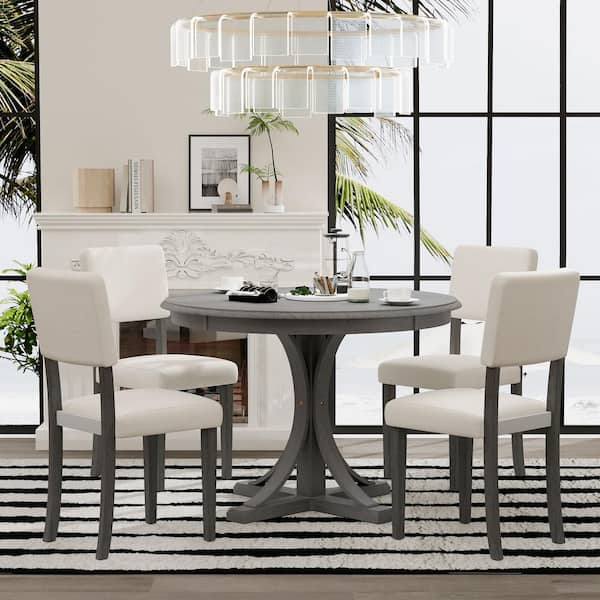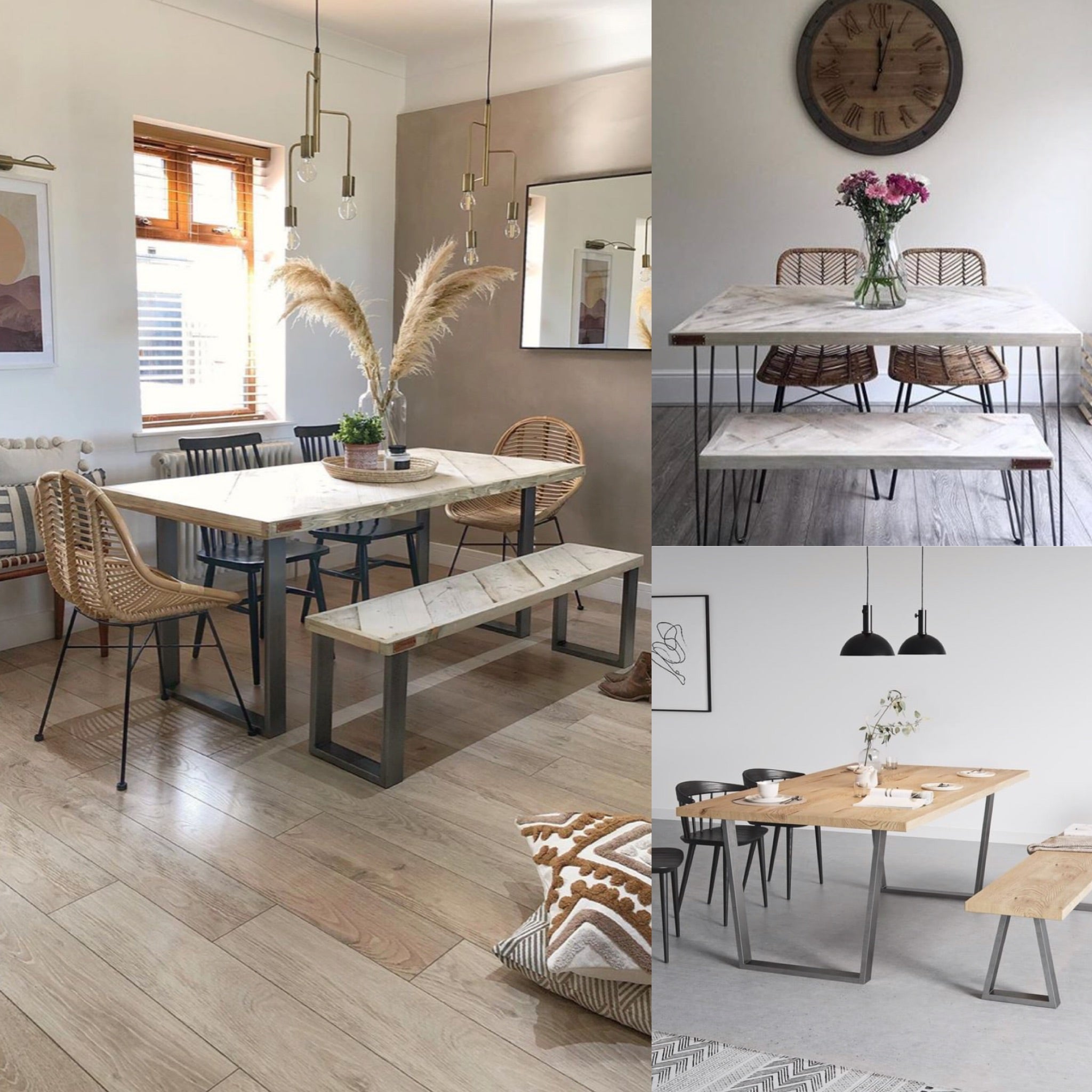How to Choose the Perfect Dining Room Table Legs for Your Home
Wiki Article
From Conventional to Modern: Find the Perfect Dining-room Table Legs for Your Design
While traditional layouts such as cabriole and transformed legs evoke a sense of timeless refinement, modern designs like barrette and geometric options present an opportunity for striking aesthetic interest. As you think about these components, the question stays: just how can you seamlessly integrate these varied leg designs to develop a harmonious dining experience?Recognizing Table Leg Styles
The variety of dining-room table leg styles can substantially affect both the aesthetics and functionality of the space. Each leg style contributes unique visual elements and practical features, providing to varied style preferences and usage requirements. Understanding these designs is crucial for selecting the right eating table that aligns with your total indoor style vision.As an example, tapered legs offer a tidy, traditional look that can enhance an area's style, while stand bases offer stability and maximize legroom, making them suitable for smaller rooms. Hairpin legs, a hallmark of mid-century modern design, present an industrial flair, enabling a ventilated, open feel. Similarly, trestle legs stimulate rustic appeal, providing robust support and a feeling of timelessness.
Wooden legs can bring warmth and appearance, whereas steel choices usually convey a smooth, contemporary vibe. Inevitably, understanding table leg styles is crucial for creating a cohesive eating location that reflects personal style while making certain practicality and comfort.
Traditional Table Leg Options
When choosing dining-room table legs, standard options usually symbolize ageless beauty and craftsmanship. These styles mirror an abundant heritage and a commitment to quality, making them suitable for those that value classic looks.Among one of the most iconic conventional leg styles is the cabriole leg, defined by its elegant bent form. This layout often features decorative carvings and is most typically discovered in Queen Anne and Chippendale furniture. One more prominent choice is the turned leg, which boasts a series of smooth, rounded shapes that offer a classic look while maintaining stability.
Furthermore, the straight leg, while simple, provides a durable and unadorned framework that can mix flawlessly with a selection of tabletop designs. For those drawn to ornate detailing, claw-and-ball feet legs evoke a sense of grandeur and can work as a stunning prime focus in any kind of eating area.
Lastly, stand bases, although not purely legs, supply an alternative standard choice that permits ample legroom and can be beautifully sculpted. Each of these standard leg styles adds to the total atmosphere of a dining-room, marrying function with visual allure.

Modern Table Leg Layouts
Modern table leg layouts use a diverse variety of designs that emphasize innovative products and clean lines. These layouts typically focus on performance while functioning as striking prime focus within an eating space. Minimal aesthetic appeals are prevalent, with legs Read Full Report crafted from products such as steel, glass, and engineered timber, which add to a ventilated and contemporary feel.One prominent style is the barrette leg, defined by its slim, conical framework that offers security without overwhelming the tabletop (dining room table legs). This design is frequently discovered in mid-century modern furniture and can easily enhance Your Domain Name various eating table forms. Another pattern is making use of geometric shapes, where legs may handle angular or unbalanced types, including aesthetic interest and a touch of creativity

Blending Styles for Special Spaces
Typically, house owners look for to produce distinct dining spaces that mirror their individual design by blending various design components. This strategy permits for the consolidation of diverse aesthetic appeals, leading to a her response harmonious yet distinctive setting. As an example, matching a rustic wooden table with streamlined, modern-day metal legs can create an eye-catching comparison that raises the room's total allure.Furthermore, integrating vintage table legs with modern table tops can evoke a feeling of background while keeping a modern perceptiveness. Such mixes not just showcase individual taste yet additionally urge creative thinking, allowing house owners to curate a space that really feels both individual and inviting.
Shade plays a critical duty in this mixing process; selecting table legs that enhance or comparison with the existing color design can enhance aesthetic passion. Whitewashed legs can soften the boldness of a dark table surface area, producing a balanced aesthetic.
Tips for Choosing the Right Legs
Choosing the right table legs is vital for accomplishing both capability and visual appeal in your eating room. Begin by considering the total style of your space. Traditional settings gain from legs that include detailed carvings or turned layouts, while modern rooms may ask for smooth, minimalist styles.Following, examine the height and stability of the legs. dining room table legs. Common dining tables range between 28 to 30 inches in elevation, so make certain the legs match this dimension for comfort. Additionally, durable materials, such as hardwood or steel, can boost security and long life
Evaluate the leg form too-- choices include directly, tapered, or stand styles. Straight legs use a traditional appearance, while conical legs can include a touch of elegance. Pedestal bases supply adequate legroom and are perfect for smaller sized spaces.
Final Thought
In recap, selecting the optimal dining-room table legs requires mindful factor to consider of both conventional and modern designs. Standard alternatives such as cabriole and turned legs use timeless sophistication, while contemporary layouts like barrette and geometric shapes supply a modern touch. By harmonizing leg style, height, and product with the overall design, a natural and welcoming atmosphere can be achieved. Inevitably, the picked table legs must mirror the desired visual, boosting the dining experience within the space.The selection of eating room table leg styles can substantially influence both the aesthetics and performance of the room. Ultimately, comprehending table leg styles is important for producing a cohesive eating area that mirrors individual design while guaranteeing practicality and convenience.One of the most legendary traditional leg styles is the cabriole leg, identified by its stylish curved shape. Straight legs offer a classic look, while conical legs can include a touch of style.In summary, selecting the ideal dining room table legs calls for cautious consideration of both modern-day and conventional styles.
Report this wiki page